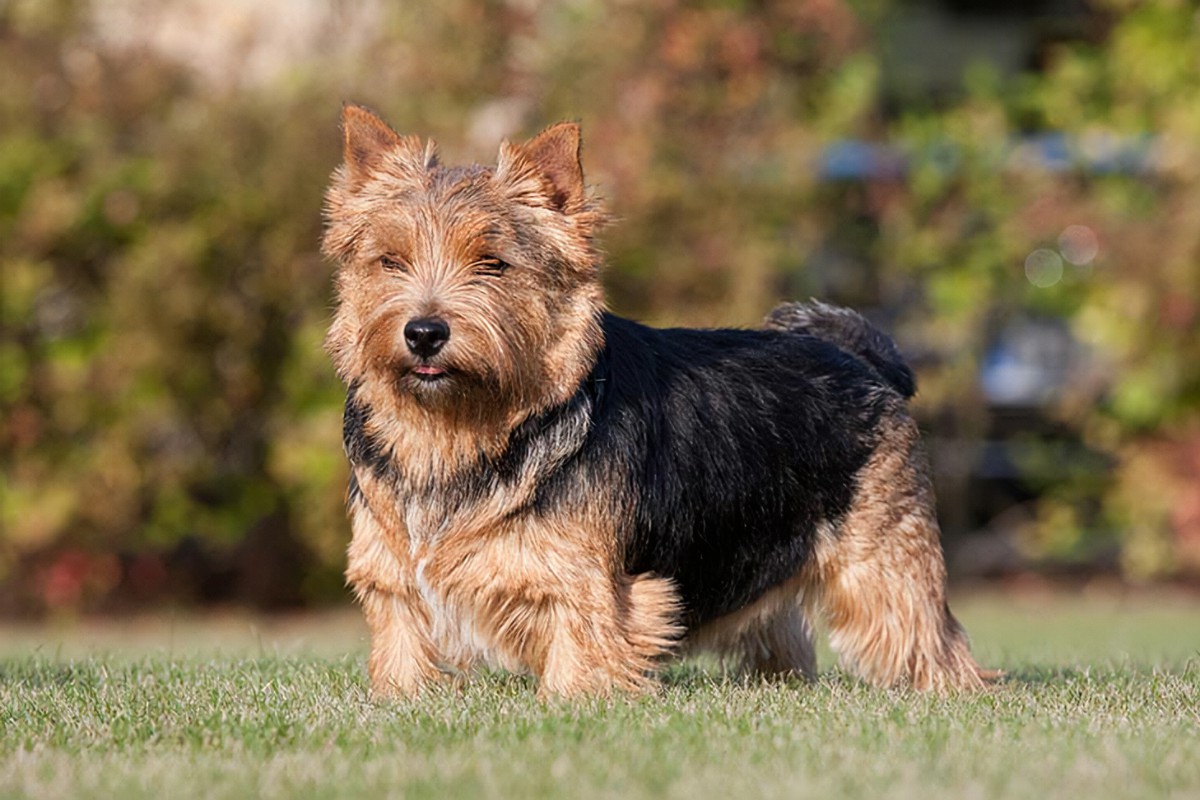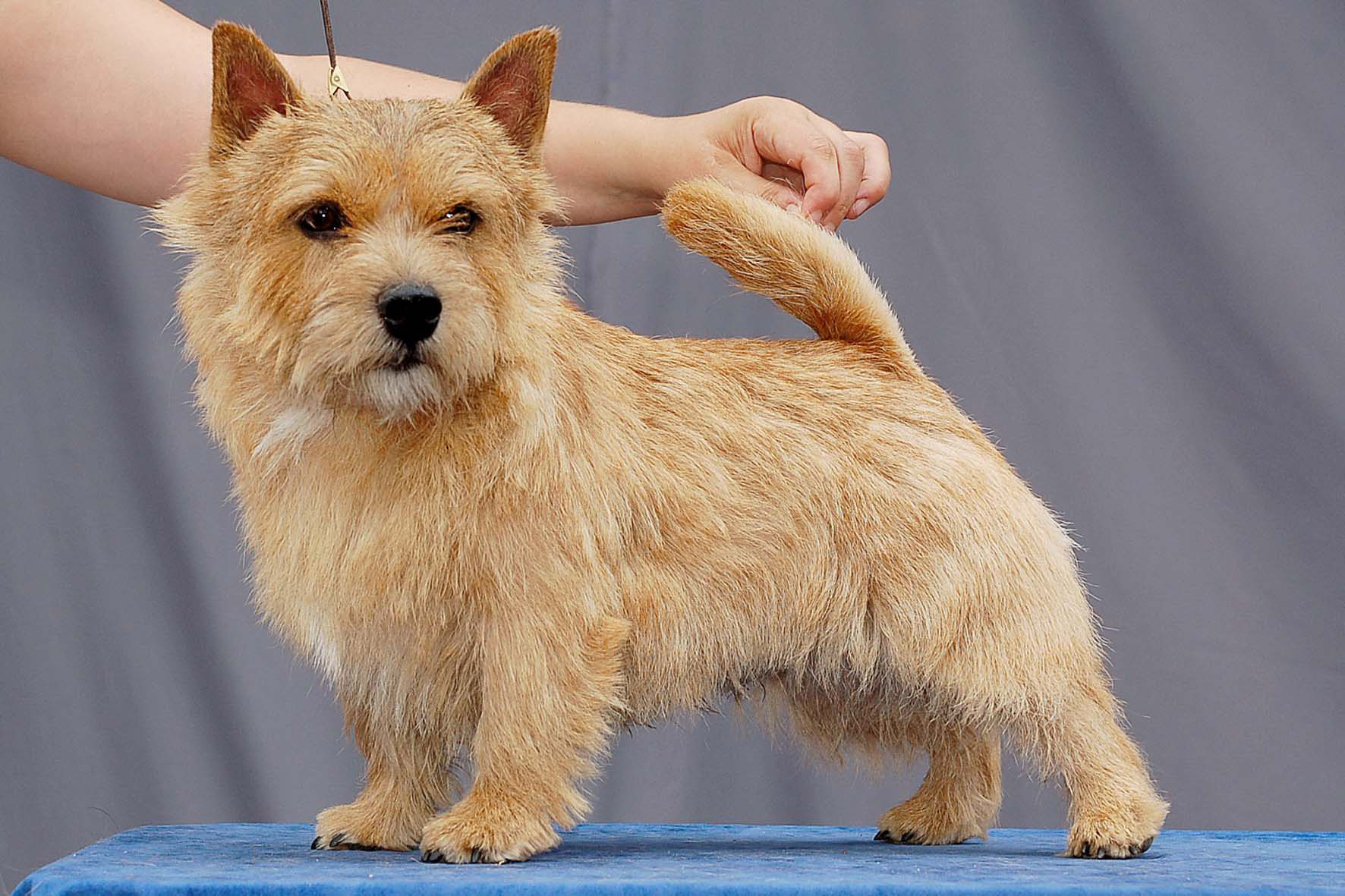
The Norwich Terrier is one of the smallest working terriers, originally bred in East Anglia, England. Developed in the 1800s, the breed was designed to hunt vermin on farms and assist in fox bolting during hunts. Closely related to the Norfolk Terrier, the two breeds were once considered one and the same, distinguished only by their ears—Norwich Terriers have upright ears, while Norfolks have dropped ears.
The Norwich Terrier became popular among students at Cambridge University, even earning the nickname “Trumpington Terrier.” Eventually, its usefulness and charm earned it recognition in the U.K. in 1932 and in the U.S. by the AKC in 1936. The breed was formally split from the Norfolk Terrier in the 1960s.
Although still relatively uncommon, the Norwich Terrier enjoys a loyal following thanks to its energetic personality and adorable appearance. Its combination of tenacity and charm makes it a favorite among terrier lovers and those seeking a small dog with a big personality.
Its popularity surged after being featured in dog shows and even in films, where its expressive face and perky ears won over audiences.
Despite its small size, the Norwich Terrier is a sturdy, well-balanced dog with a foxlike expression and lots of character.
Coat:
Hard, wiry, and straight with a dense undercoat. The outer coat stands slightly off the body.
Color:
Wheaten, red, black and tan, or grizzle (a mix of black and gray). Slight white markings are acceptable but not preferred.
Size:
• Height: 9–10 inches (23–25 cm)
• Weight: 11–12 lbs (5–5.5 kg)
Build:
Compact and strong, with a level topline and short legs.
Head & Expression:
Broad, slightly rounded skull with a short, strong muzzle. Dark, oval eyes give an alert, intelligent look.
Ears:
Distinctively upright and pointed, giving the breed its characteristic expression.
Tail:
Traditionally docked in some countries; carried level with the back when undocked.
Though small, the Norwich Terrier is all terrier at heart—fearless, lively, and full of personality.
Brave and Bold:
Not easily intimidated despite its size. Always ready to explore or defend its turf.
Friendly and Social:
One of the more amiable terriers, they’re generally good with people, including children.
High Energy:
Active indoors and outdoors. Requires regular exercise to stay mentally and physically content.
Alert and Vocal:
A natural watchdog, quick to alert its people to anything unusual.
Clever and Curious:
Thrives on engagement and enjoys solving puzzles or learning tricks.

• Compact Yet Hardy:
Ideal for apartment living but can handle country life too. It’s small but no lap dog—it loves action.
• Great Personality:
Combines terrier independence with a surprisingly affectionate nature. Typically enjoys family life and gets along well with respectful kids.
• Low Shedding:
Though it has a wiry coat, it sheds minimally if maintained properly.
• Trainable and Responsive:
Eager to learn when training is positive and consistent.
Training:
Start early. Norwich Terriers are smart and respond well to reward-based methods. They can be a bit stubborn if training is too repetitive.
Exercise:
Needs at least one good walk a day, plus active playtime. Games that mimic hunting, like scent work or digging boxes, are great.
Grooming:
Requires hand-stripping or professional grooming every few months to maintain the coat’s texture. Weekly brushing keeps it tidy.
Socialization:
Early exposure to other dogs, people, and different environments is important to prevent small-dog syndrome or over-alertness.

Generally a healthy breed, the Norwich Terrier benefits from its working heritage. However, it can be prone to:
• Upper airway syndrome (due to a narrow trachea in some individuals)
• Patellar luxation
• Hip dysplasia
• Epilepsy (rare but present in the breed)
Regular veterinary checkups and choosing a breeder who tests for these issues will help ensure a long, healthy life.
Compared to the Norfolk Terrier:
The only major difference is ear shape—Norwich has pricked ears; Norfolk’s are dropped. Both are similar in size and temperament.
Compared to the Cairn Terrier:
Cairns are slightly larger and have a rougher, shaggier coat. Norwich is neater in appearance and generally a bit more sociable.
Compared to the Border Terrier:
Border Terriers are taller and have a more laid-back personality. Norwich is more compact and often more alert or energetic.
Choose the Norwich Terrier if:
• You want a compact, sturdy dog with a spirited attitude
• You enjoy grooming or don’t mind hiring a groomer
• You’re looking for a terrier that’s a bit more sociable than most
• You can provide regular mental stimulation and activity
Not Ideal For:
• Families that want a laid-back or low-energy pet
• Those looking for a hypoallergenic or low-maintenance breed
• Owners who don’t have time for training and socialization
Whether you’re a terrier enthusiast or simply want a lively companion in a small package, the Norwich Terrier offers the perfect blend of bravery, charm, and intelligence. At United Pet Club, we’re here to connect you with everything you need to raise and care for this delightful breed.